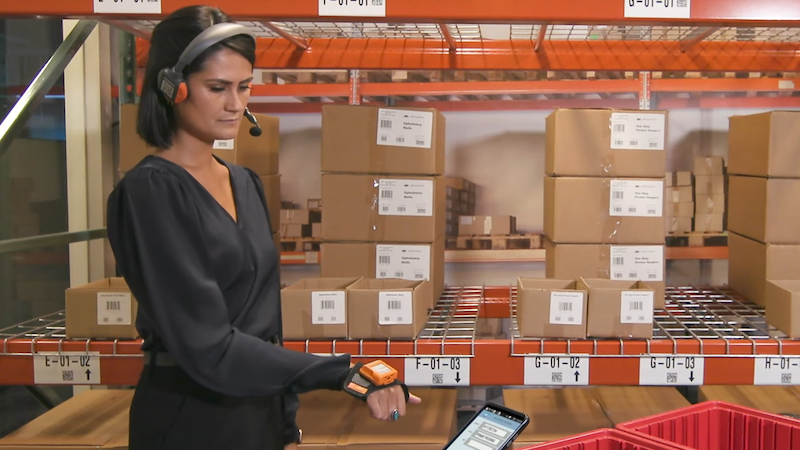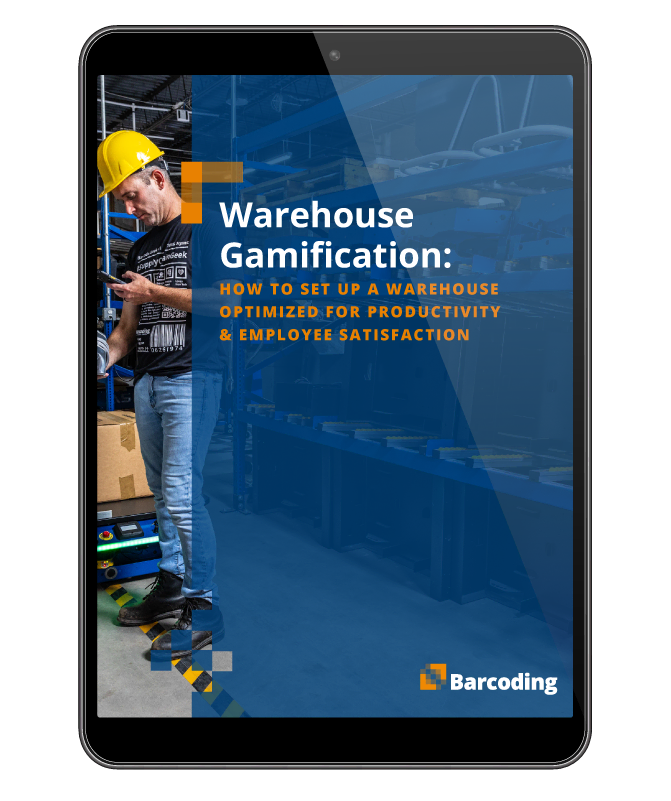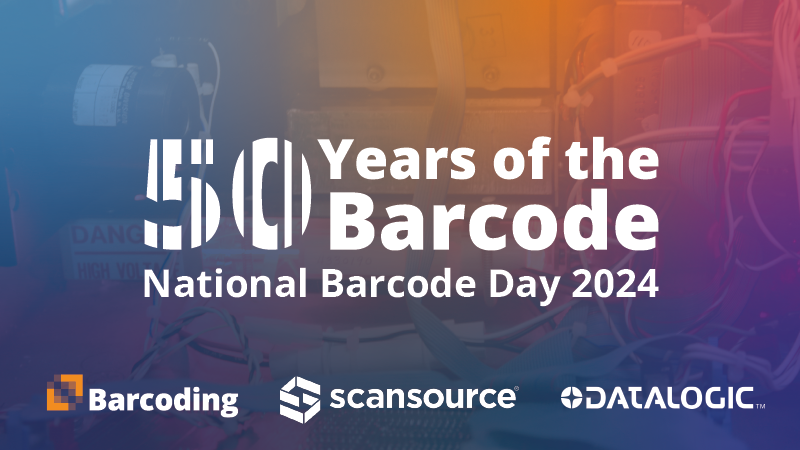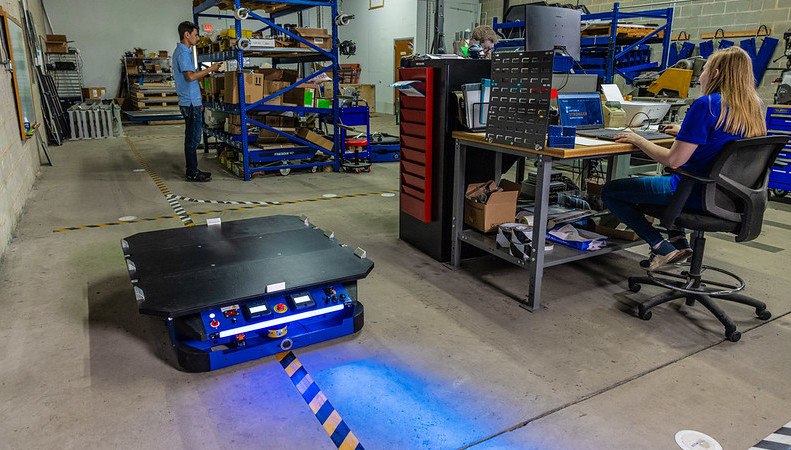Mobility has changed the way we get things done—at home, on the go, and in the workplace—and the warehouse work environment is no exception. It’s been years since mobile devices made pen-and-paper obsolete, even as early developments required workers to carry heavy devices or swap batteries mid-shift.
Times have changed. Today's workforce expects an intuitive, streamlined mobile experience that enables optimal productivity and job satisfaction. Digital native generations appreciate and seek out an experience that gets work done using fewer screens, fewer clicks, hands-free operation, and all-day comfort.
At the same time, HR and operations leaders know they need to find new ways to engage, empower, develop, and retain warehouse workers—and that mobility and wearables enable new ways of onboarding, training, and upskilling.
In an increasingly competitive market for talent, savvy employers are quickly finding ways to differentiate their workplaces and transform their warehouses into safer, more productive and engaging work environments that help attract and retain more satisfied, high-performing employees.
How Mobility Modernized Warehouse Work
The new generation of mobility, wearables, and end user enablement technologies have fundamentally transformed warehouse work in several key ways.
Real-time workflow management and data capture deliver new levels of accuracy and efficiency. Workers can access information and capture data on the go, so clipboards and dependence on a desktop are relics of the past.
Today, disparate teams and workflows can all connect to unify inventory, fulfillment, shipping, and other interdependent but distributed tasks. Mobility enables omnichannel fulfillment, coordinating workers across many locations to deliver customer delight as a team.
And it’s also revolutionizing the warehouse worker experience. Warehouse mobility facilitates hands-free operation through wearables and voice technology. Rather than carry clunky devices, they use voice commands for navigation and scan confirmation.
Modern mobility also supports flexibility to adapt to changing needs. Mobile solutions can quickly deploy to new tasks and workflows—and intuitive mobile UX design enables gig workers to get productive right away. That agility can be priceless in an age of disruption.
Augmented and virtual reality can also streamline and standardize employee onboarding, training, and on-the-job guidance with an immersive experience that improves learning while reducing errors. And real-time visibility into performance metrics means workers can see their progress, get feedback, and improve on the fly.
Here are 9 game-changing ways mobile UX is helping warehouse operators facilitate productivity and worker satisfaction, so they’re ready and resilient to face the next disruption.
1. Embracing Generational Differences Within a Workforce
Generational diversity can be both a strength and a challenge in the modern workplace. Baby boomers, Generation X, millennials, and Gen Z all have varying expectations and comfort levels with technology. Offering a mobile experience that's intuitive across age groups can help ensure everyone is on the same page, both literally and figuratively.
As baby boomers retire, millennials and Gen Z now comprise a majority of warehouse workers. These digital natives value clear expectations, incentives, and technology that “makes sense.” Meeting their needs and demonstrating value for all workers is key for hiring and retention.
2. Promoting Occupational Health & Safety
One of the leading causes of workplace injuries is poor ergonomics, especially in physically demanding environments like warehouses. Mobile interfaces designed with ergonomic principles in mind can minimize the risk of repetitive stress injuries.
Mobile app features like adjustable font sizes, voice commands, and simple swipe gestures help make tasks less strenuous and more efficient. Lightweight wearables take comfort beyond the limits of handhelds, and can be tailored to make tasks quicker and easier.
3. Gamification for Engagement
The thoughtful introduction of game elements into warehouse work can be a powerful tool for worker motivation. Workers can collect rewards and badges based on performance metrics—not just speed, but also efficiency and accuracy. Gamification can encourage individual and team performance with friendly competition that makes work a little more fun, while delivering real-time performance feedback. And today’s mobile devices and wearables can make the gamified experience even more immersive and engaging.
4. Delivering Real-time Feedback for Immediate, Continuous Improvement
Today's workers want constant communication, not just annual reviews. There’s nothing more frustrating than finding out about a mistake long after it’s made—or worse, after spending a whole day completing tasks the wrong way.
Real-time feedback through mobile interfaces allows for instant corrections and continuous improvement, with minimal disruption to workflows. An immediate feedback loop can help reduce errors and boosts work quality, supporting customer satisfaction, too.
5. Competing for Talent and Enhancing Worker Retention
With labor shortages, qualified workers can choose where to work. The mobile experience is increasingly becoming a differentiator in attracting top talent. Workers are more likely to choose employers who provide modern, efficient, and user-friendly tools that make their jobs easier. A seamless mobile experience with features like personalized dashboards and easy access to training materials can make all the difference.
Successful recruiting isn’t enough, either. Skilled workers are in high demand, and retention is more crucial than ever. Give them the right tools to maximize job satisfaction and compensation. While lagging technology may drive them to competitors, an intuitive, streamlined mobile UX shows you value staff and helps attract and retain top talent.
6. Streamline Onboarding, Training, and Upskilling
The ability to quickly onboard new employees, provide effective training, and offer continuous upskilling opportunities is invaluable. A mobile user experience that includes easy-to-navigate tutorials, interactive modules, and real-time performance tracking can drastically reduce the time it takes for new hires to get to work and feel like real members of the team.
An immersive mobile UX not only accelerates initial onboarding; it also enables ongoing training to be more targeted and efficient. By integrating educational components directly into the mobile interface, employers can foster a culture of continuous improvement and grow a skilled, engaged workforce that’s equipped to adapt as industry demands change.
7. Supporting Optimal Employee Onboarding, Work/Life Balance, and Worker Retention
Increasingly, workers are looking for work-life balance, and it can be particularly challenging for warehouse operators to deliver flexibility and still successfully meet productivity goals. That’s where an intuitive UI with wearable technology can support a faster, more effective onboarding experience, and ultimately better employee retention.
Properly outfitted, even gig workers can walk in and get productive fast. That can facilitate shift trades and more flexible scheduling with less oversight. Meet seasonal demand spikes by giving temp workers the tools they need to meet production goals, and watch them exceed expectations. The right UX can be incredibly empowering.
8. Minimizing Steps, Screens, and Clicks
Extra, unnecessary workflow steps slow workers down. If it frustrates management, think about how much it also frustrates workers whose earnings are impacted by their productivity measures. Optimized mobile interfaces can simplify multi-step processes into streamlined, intuitive, single-screen experiences.
Every extra step or screen in a process adds time and potential for error, while less tapping and swiping means more time on core job functions. Together with automation options like automated guided vehicles (AGVs) and autonomous mobile robots (AMRs), advancements in end user enablement technologies are helping warehouse workers waste less time and effort—and focus on adding real, human value.
9. Improving Accessibility of Warehouse Jobs
Wearable and mobile technologies aren’t just conveniences; they’re essential tools for making warehouse work more accessible to employees with varying abilities. Features like voice-activated commands and haptic feedback can facilitate easier navigation and operation for workers who may have vision, hearing, or mobility challenges.
Similarly, customizable interfaces allow for the adjustment of text size, contrast, and layout, making the mobile experience more user-friendly for everyone. These advances can help make warehouse operations more inclusive and accessible, and help employers broaden their talent pool, improve worker satisfaction, and foster a more diverse and inclusive workplace environment.
Mobility & Wearables: Fit for the Future
It’s a revolutionary time for warehouse operations, and mobility is at the forefront. But even the most cutting-edge tools have the potential to actually undermine productivity and morale—if the user experience isn’t thoughtfully designed and implemented. It’s crucial to put workers at the center of any UX strategy,and start with a deep understanding of their needs. That’s why the #SupplyChainGeeks at Barcoding apply a Process, People, Technology approach to everything we do.
Before we recommend a technology, we take the time to really listen and understand: you, your objectives, and the teams tasked with achieving them. We help ensure you’re on a firm foundation for long-term, sustainable success.
Take gamification, for example. Applied with care, game elements can help warehouse workers achieve more—and enjoy more—in the work they do. But it’s not a peel-and-stick solution. Learn more about what makes a great gamified warehouse experience when you download our free guide!








